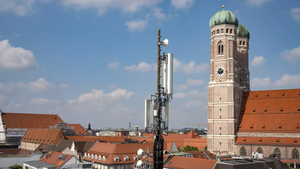
A TBR analyst says Verizon will start to deploy LTE-Advanced features on its 4G network in the US by the end of this year.
"Verizon Wireless is investing in LTE by expanding its LTE network over its AWS spectrum and will launch its LTE-Advanced services in 4Q13," Eric Costa, an analyst for Technology Business Research Inc. (TBR) , wrote in a report.
LTE-Advanced is a specification laid down by the 3rd Generation Partnership Project (3GPP) in release 10 of the 4G specification. It includes features like bonding radio channels (carrier aggregation) and multiple antenna arrays (MIMO) to raise network capacity and support more active users. Carriers are planning to start deploying some LTE-A features to start advanced services. (See: Why You Should Care About LTE-Advanced (Eventually).)
Light Reading checked in with Verizon on Monday afternoon to see what the operator had to say about LTE-Advanced plans. "LTE-Advanced is a set of features that comes along with the 4G LTE standards, and we are currently preparing these features for our network," a spokesman told us in an email. "We've made no announcements about timing."
Verizon CTO Nicola Palmer has previously said the operator wants to lead on LTE-Advanced. "We're excited about the carrier aggregation feature of LTE-Advanced that allows us to take our 700 MHz and AWS spectrum assets and make them seamlessly operate together and appear as one to devices and to customers," Palmer said in July.
Verizon has been building LTE on the AWS (1,700/2,100MHz)spectrum this year. "In most major markets, we have activated 4G LTE service on our AWS spectrum including New York, Los Angeles, Seattle, San Francisco, Chicago [and] Boston," the spokesman told us. (See: Verizon Fires Up AWS Support.)
"This deployment in some cases triples network capacity," he said. "An ever increasing number of devices can take advantage of this spectrum; we expect that 20 percent of our 4G LTE devices by year's end will be capable of taking advantage of service on our AWS spectrum."
Thus, bounding radio channels -- a.k.a. carrier aggregation -- so that devices can ride across both frequencies would likely make most sense as the first LTE-Advanced feature for Verizon to deploy.
Verizon has also been launching double-wide 2x20MHz channels on the AWS spectrum in major markets. These moves and LTE-Advanced features -- when they arrive -- should boost the speed of the Verizon network.
The carrier isn't bragging about any speed boosts yet. "Consistently reliable 4G LTE service is our design intent," the spokesman said in his email. "We aim to provide our customers with 5-12 Mbps downlink and 2-5 Mbps uplink speeds each time they access the 4G LTE network -- regardless of where they are, and what time it is."
— Dan Jones, Mobile Editor, Light Reading
About the Author(s)
You May Also Like


.jpg?width=300&auto=webp&quality=80&disable=upscale)









